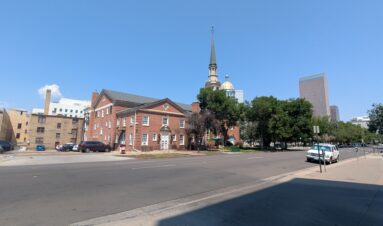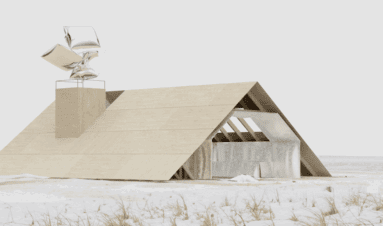Scottish Rite Masonic Center
1370 Grant St
Fast Facts
Architect: William Norman Bowman
Architectural Style: Neoclassical
Year Built: 1925
Designation: Denver Landmark
Neighborhood: Capitol Hill
Handicap Accessible
SCOTTISH RITE MASONIC CENTER
Why do you think the Neo-Classical style was used so frequently in Masonic architecture?
The Scottish Rite Masonic Center has been a part of Colorado history from its earliest period up to the present day. In 1891, the Scottish Rite bodies raised $50,000 to purchase a church at 19th and Welton Streets, but the economic panic of 1893-94 cost many of the members their fortunes and the heavily mortgaged building was lost to foreclosure. In 1909, the lots at East 14th Avenue and Grant Street were purchased, but construction was not authorized until 1922. The Neo-Classical building was completed May 14, 1925, and designed by William Norman Bowman. It is located in Capitol Hill.
Structure
This structure was built of buff-colored glazed terra cotta with a mottled finish, similar to the appearance of limestone or buff sandstone. It also has a pink-granite base and a white, membrane-covered dome that was recently repaired. Bowman originally designed a larger, more ornately-decorated building for the site, but redesigned the building to be the current three-story structure. There have been very few changes made to the building. It appears that the dome was originally clad with slate shingles or perhaps flat, interlocking clay tile, but otherwise the exterior remains quite similar to its original construction (Scottish Rite).
Several masonic symbols are present on the exterior of the Scottish Rite temple, including a double-headed eagle at the crest of the western pediment. The metal eagles carry a pyramid with the number 32 on their heads. According to Colorado Consistory No. 1, the double-headed eagle is meant to “symbolize the double jurisdiction of the Council—one which looked both to the East and to the West”. The triangle is a symbol of the divinity, and 32 refers to the 32nd degree, the highest degree a member may attain (except the 33rd degree, which is honorary) (Scottish Rite).
Today, the building serves as not only the home of the Scottish Rite of Freemasonry for the Denver metropolitan area, but as a community resource and is available for corporate and private functions.
Architect
Prominent architect William Norman Bowman was selected to design the new home for the Denver Scottish Rite. Born in New York in 1868, Bowman had studied under Elijah E. Meyers (the architect who designed the Colorado State Capitol Building) and settled in Denver in 1910. Bowman was a member of the consistory before his death in 1944. He won numerous commissions to design such structures as the Mountain States Telephone building, Park Hill Methodist Church, the Colburn and Cosmopolitan hotels and Cole and Byers junior high schools (Denver Consistory).
Freemasons
The Scottish Rite of Freemasonry was organized in the United States in 1801 and traces its lineage to Masons in 18th century France as well as to Frederick the Great of Prussia. Scottish Rite bodies are located on every continent and share the common values and goals of helping men become better individuals, husbands, fathers and citizens of their respective countries.
As indicated by the name, the Scottish Rite is a part of the Masonic Fraternity, advancing the principles of Freemasonry through the ritualistic teachings of the 4th through the 32nd degrees. Freemasons and Scottish Rite Masons hold the philosophical and practiced principles of brotherhood, equality, religious toleration, political freedom and charity as important guiding principles in their lives and conduct (Denver Consistory).
This nearly 100-year-old institution, built in the Neo-Classical style, reflects Thomas Jefferson’s ideas about classical design in public architecture. He felt that “this kind of architecture was not just beautiful, but could ‘excite ideas’—and was therefore reflective of the new, free society that Americans hoped to build. After the Revolution, through Jefferson’s efforts and those of George Washington, Neo-Classical architecture would become the style of the new Federal city and the distinctive architecture of the American Republic.” (This Divine Science).
References
Masonry of Denver. Scottish Rite. Retrieved from http://www.masonryofdenver.com/2017/01/scottish-rite/.
Denver Consistory. Retrieved from http://denverconsistory.org/.
The George Washington Masonic National Monument. This Divine Science. Retrieved from https://gwmemorial.org/blogs/news/this-divine-science.
Map
Scottish Rite Masonic Center
1370 Grant St, Denver, CO, USA
Nearby Sites
View All
First Baptist Church of Denver
First Baptist Church of Denver First Baptist Church of Denver was organized prior to Colorado's ...
More Info
Denver Woman’s Press Club
The Denver Woman’s Press Club (DWPC) clubhouse, known as the Burr House, was built in 1910 in the...
More Info